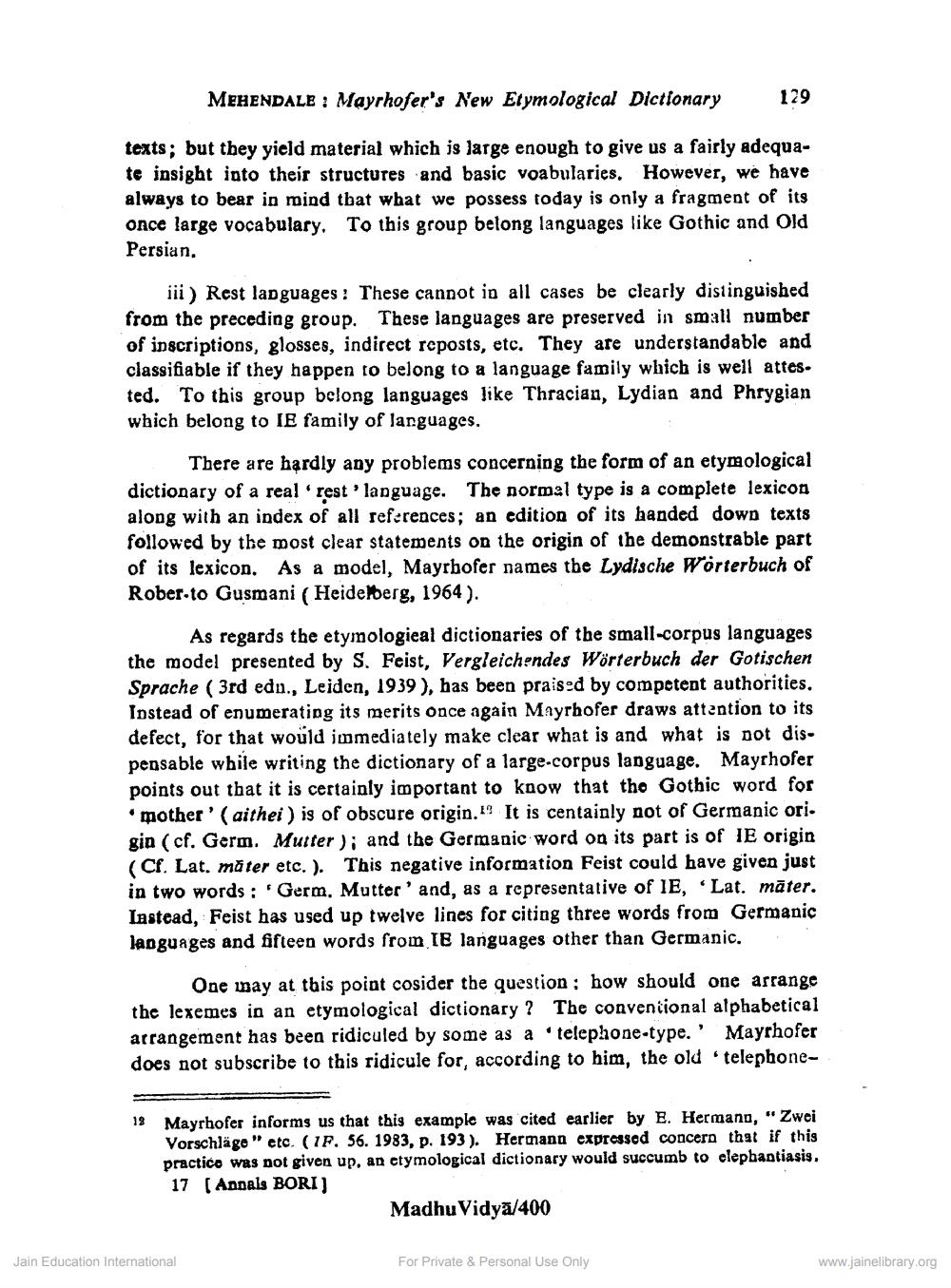________________
MEHENDALE : Mayrhofer's New Etymological Dictionary
129
texts; but they yield material which is large enough to give us a fairly adequate insight into their structures and basic voabularies. However, we have always to bear in mind that what we possess today is only a fragment of its once large vocabulary. To this group belong languages like Gothic and Old Persian.
iii) Rest languages : These cannot in all cases be clearly distinguished from the preceding group. These languages are preserved in small number of inscriptions, glosses, indirect reposts, etc. They are understandable and classifiable if they happen to belong to a language family which is well attes. ted. To this group belong languages like Thracian, Lydian and Phrygian which belong to IB family of languages.
There are hardly any problems concerning the form of an etymological dictionary of a real rest'language. The normal type is a complete lexicon along with an index of all references; an edition of its handed down texts followed by the most clear statements on the origin of the demonstrable part of its lexicon. As a model, Mayrhofer names the Lydische Wörterbuch of Roberto Gusmani (HeideMerg, 1964).
As regards the etymological dictionaries of the small-corpus languages the model presented by S. Feist, Vergleichendes Wörterbuch der Gotischen Sprache (3rd edn., Leiden, 1939), has been praised by competent authorities. Instead of enumerating its merits once again Mayrhofer draws attention to its defect, for that would immediately make clear what is and what is not dispensable while writing the dictionary of a large-corpus language. Mayrhofer points out that it is certainly important to know that the Gothic word for . mother' (aithei) is of obscure origin. It is centainly not of Germanic ori. gin (cf. Germ. Mutter); and the Germanic word on its part is of IE origin (Cf. Lat. mäter etc.). This negative information Feist could have given just in two words: Germ. Mutter' and, as a representative of IE, Lat. māter. Instead, Feist has used up twelve lines for citing three words from Germanic languages and fifteen words from IE languages other than Germanic.
One way at this point cosider the question ; how should one arrange the lexemes in an etymological dictionary? The conventional alphabetical arrangement has been ridiculed by some as a telephone-type.' Mayrhofer does not subscribe to this ridicule for, according to him, the old telephone
13 Mayrhofer informs us that this example was cited earlier by E. Hermann, " Zwei
Vorschläge" etc. (IF. 56. 1983, p. 193). Hermann expressed concern that if this practico was not given up, an etymological dictionary would succumb to elephantiasis. 17 (Annals BORI)
Madhu Vidyā/400
Jain Education International
For Private & Personal Use Only
www.jainelibrary.org




